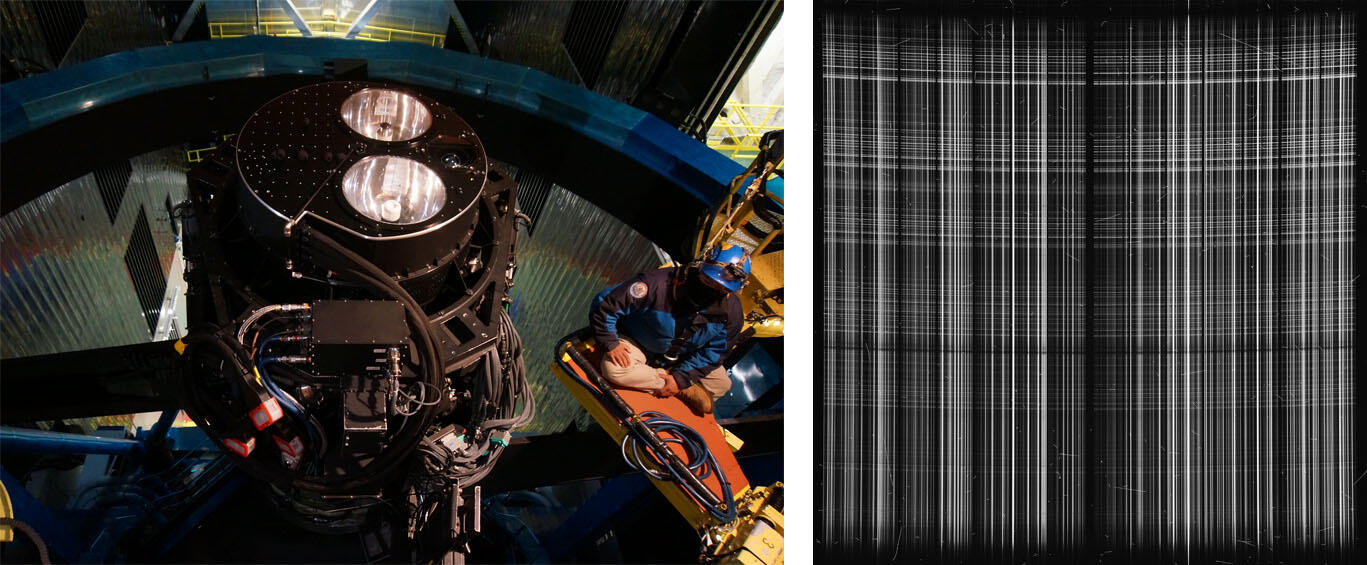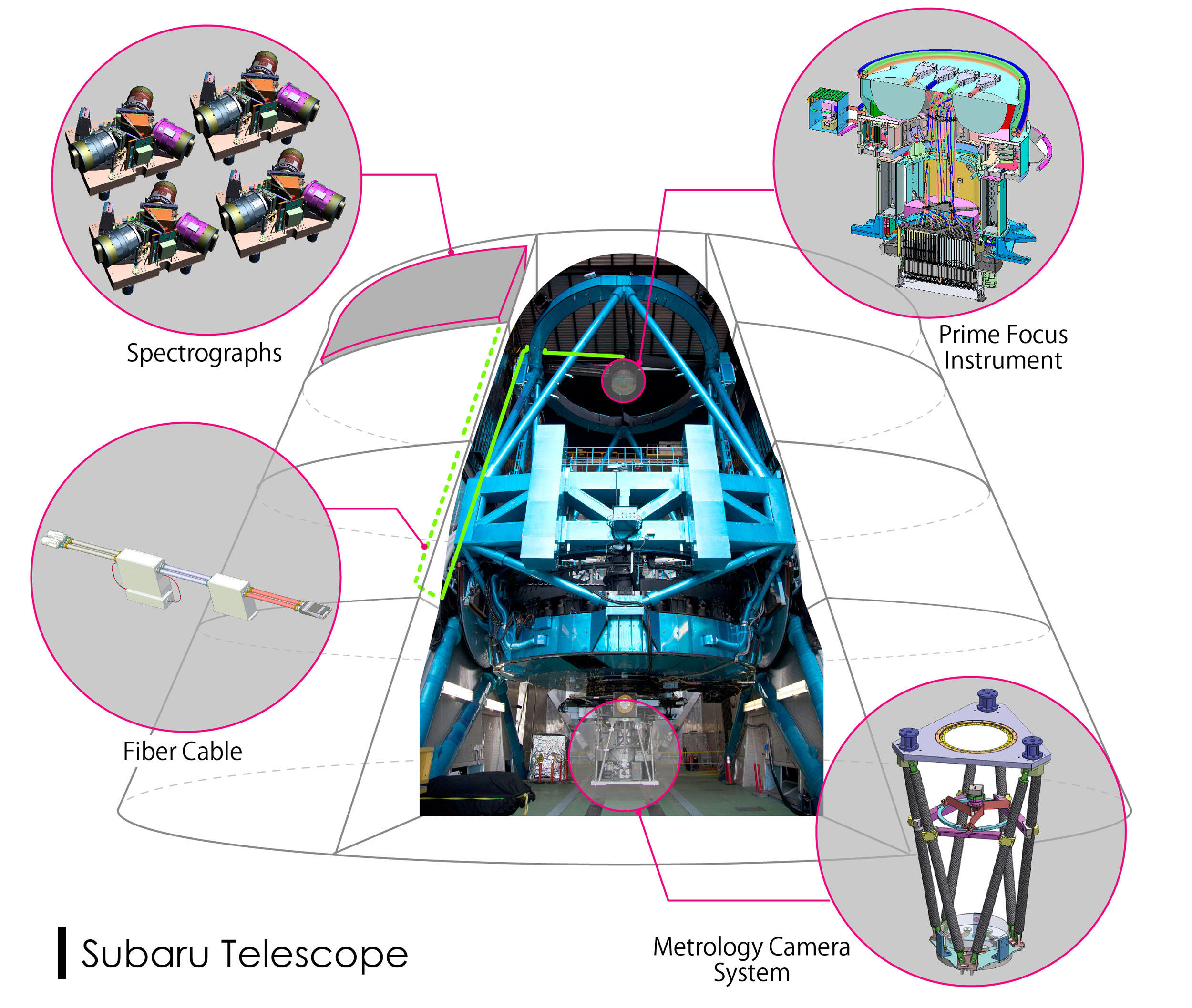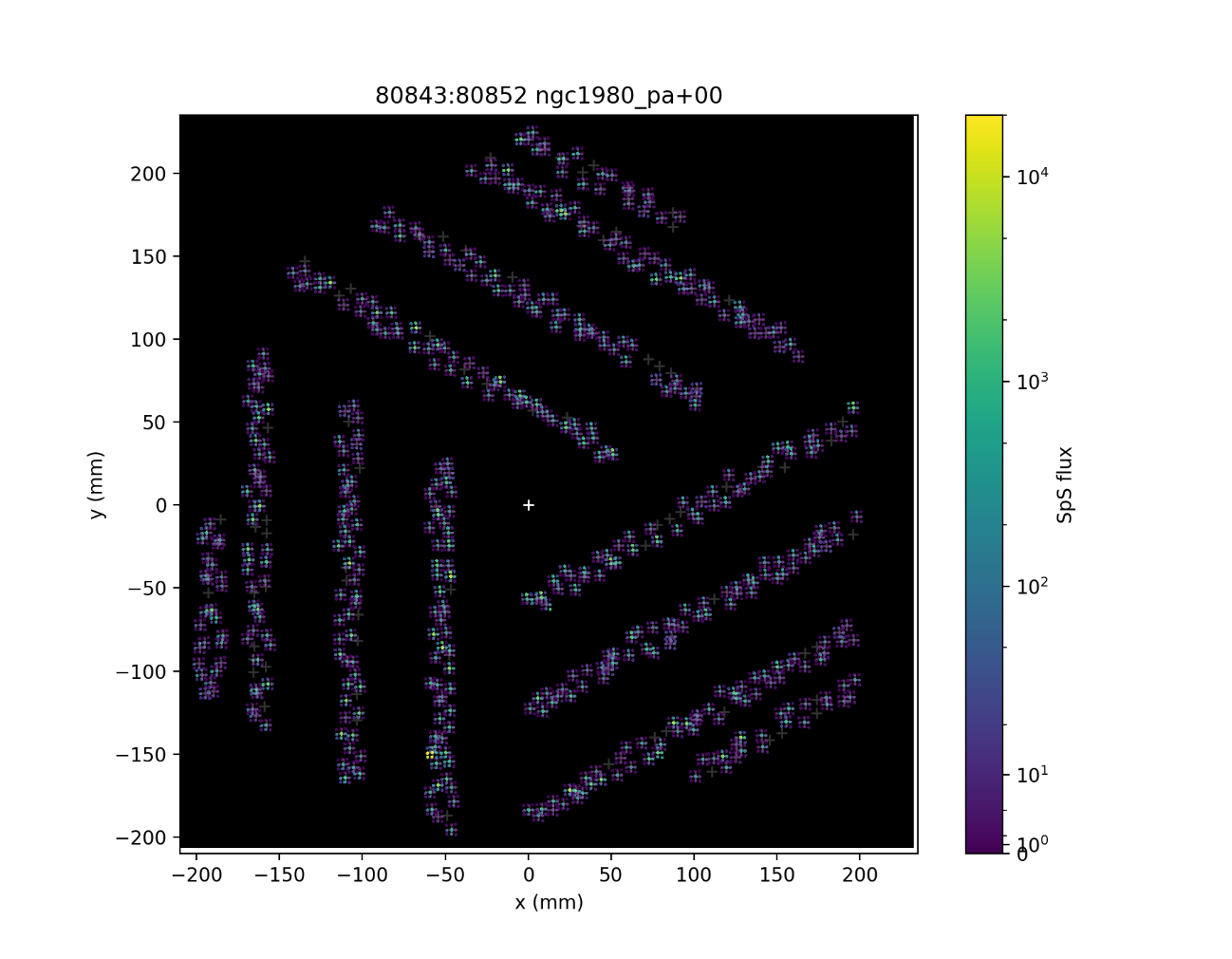The international collaboration developing the Prime Focus Spectrograph (PFS) has passed a significant testing milestone by successfully taking spectra from target stars. This is also a major step forward for the Subaru Telescope 2.0 project, which aims to advance the Subaru Telescope's unique evolution with its distinctive observational instruments.

Figure 1: (left) The new instrument for capturing cosmic rainbows mounted on the top of the Subaru Telescope . High resolution image is here (4.6 MB). (right) Results from the observation of a field of NGC 1980. This is the ISR (Instrument Signature Removal)-processed, sky-unsubtracted CCD image from a 300-second exposure of the red camera of the Spectrograph Module 1, clearly showing a number of spectra from the stars on and through the fibers. (Credit: PFS Project)
PFS is one of the key instruments of the Subaru Telescope 2.0 project, which will greatly enhance the capabilities of the Subaru Telescope. When completed, the instrument will use about 2400 optical fibers to take simultaneous exposures of a large number of celestial objects in the night sky, such as stars and galaxies, and split the light into its various wavelengths. The resulting data set is called a "spectrum," which tells researchers various details about the celestial object, including its motion, physical parameters, and age.

Figure 2: Schematic picture of the PFS instruments. PFS operations are scheduled to begin around 2024. (Credit: PFS Project/Kavli IPMU/NAOJ)
The team has been carrying out on-telescope tests since 2018, but none have been more important than this latest test to capture light from celestial objects with PFS.
In late September 2022, the team ran engineering observations at the Subaru Telescope, where they carried out raster scans. These scans allowed researchers to test the alignment of their instrument relative to the objects they should be capturing. The fibers were set to where the researchers believed the target objects should be observable on the Prime Focus Instrument (PFI) focal plane, then the telescope was dithered in a grid pattern on the sky, and a spectrograph exposure taken at each dithered position. This allowed the team to measure the discrepancy between the actual fiber position and real target position.

Figure 3: A result from a raster scan on the field of NGC 1980. The image shows a collection of 3x3 data arrays over the field of view, each of which indicates how much light came into each fiber that observed a bright star. A brighter color is assigned to a data point where more light from the star was detected through the fiber. The brightest data point is seen near the center of the 3x3 array in most cases, indicating that the fibers are positioned reasonably accurately on the focal plane to observe those stars. (Credit: PFS Project)
After starting to take data, the team continued to take more raster scan data sets on many bright stars to fix the errors and optimize the positioning, until finally they were satisfied that the instrument can accurately place the fibers onto its targets.
"The team's efforts were again great. This September run was scheduled only recently, but they efficiently re-optimized the priorities and plans and completed the required tasks both on hardware and software in a timely manner. And indeed the run was successful and productive. I very much appreciate these and I am really proud of the team members," says PFS Project Manager Naoyuki Tamura, a project associate professor at the Kavli Institute for the Physics and Mathematics of the Universe.
Tamura says this milestone is still a result on a single field with a specific fiber configuration. The fiber alignment to the stars is yet to reach satisfactory levels. "But this is clearly a very encouraging achievement. Based on the fact that we have been able to capture stellar light from our target objects using PFS, I would declare the team has achieved Engineering First Light and stepped into the next regime of the instrument commissioning."
PFS is one of the key instruments of the Subaru Telescope 2.0 project, which started in Fiscal Year 2022. Taking advantage of the Subaru Telescope's wide field of view, the combination of HSC (imaging) and PFS (spectroscopy) is expected to provide unprecedented large-scale survey data that will reveal the nature of dark matter and dark energy, structure formation in the Universe, and the physical processes of galaxy formation and evolution. The achievement of PFS's engineering first light marks a major step forward for the Subaru Telescope 2.0 project.


